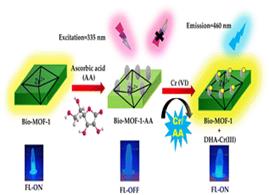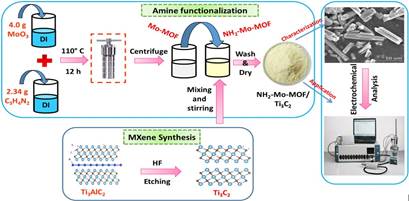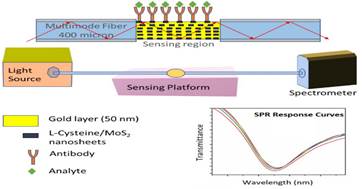Ministry of Science & Technology
Novel nano polymers pave way for low-cost, efficient sensors
प्रविष्टि तिथि:
30 AUG 2024 5:51PM by PIB Delhi
Novel electrochemical and optical sensors developed with the help of a new group of nano polymer materials called Metal-organic frameworks (MOF) and 2-dimensional (2D) materials, can be used for rapid and convenient detection of several health, food quality, and environmental parameters. They can pave the way for low-cost point of care devices for quick detection and screening of diseases such as anaemia, cancer and so on.
Recent decades have witnessed the advancements in several categories of nanomaterials for sensing applications. The MOFs and 2D materials possess several unique features that should project them as better alternatives as sensors, than other nanomaterials. Both MOFs and 2D class of materials are known for their large surface area, functionality, and optoelectronic properties. They also have a wide range of synthesis methods and can be developed into disposable electrodes, optical kits, fiber optic sensors, colorimetric strips, etc.
These excellent material features have been exploited to develop electrochemical and optical sensors for different analytes, such as bacteria, Aflatoxins, and heavy metals.
Researchers of Institute of Nano Science and Technology (INST), Mohali, an autonomous institute of Department of Science and Technology, have developed a bunch of electrochemical and optical biosensors based on nano polymers multifunctional Metal-organic framework (MOF) and 2-dimensional (2D) materials. MOFs are the multifunctional coordination polymers while MoS2 nanosheets, MXenes are some 2D materials that have emerged as materials of choice for sensors.
The researchers have utilized MOFs, 2D nanomaterials (e.g., MoS2, MXenes) and their composites. While these materials offer large surface areas, functionality, and desired transduction modes, their integration with biorecognition molecules was also robust and therefore resulted in reliable sensor performance. The results were published in the Elsevier Journals Food Control and Microchemical.
The application of MOFs, 2D materials and their composites allows greater sensitivity over many of the existing methods for the electrochemical and optical sensing of analytes. These materials offer multimode detection capabilities and hence some of the developed sensors have been demonstrated for simultaneous naked-eye based and fluorescence-based detections. The bioconjugation of biorecognition elements over the MOF and 2D materials-based interfaces was also characterised with a greater density to facilitate nano- to pico- molar level sensitivities.
Besides, detection of diseases, the devices are also useful for analyzing food toxins such as Aflatoxins and Zearaloene in water, milk and staple food samples. Some of these sensors can be deployed as gas and heavy metal detection tools to monitor the environmental quality.
Publications:
https://doi.org/10.1016/j.foodcont.2024.110694
https://doi.org/10.1016/j.microc.2024.110122
https://doi.org/10.1016/j.foodcont.2024.110497
https://doi.org/10.1039/D4NR00768A

A simple nanoprobe to detect Cr(VI) in water and food samples. The nanoprobe is prepared with a MOF conjugated with ascorbic acid, whose fluorescence is turned-on in the presence of Cr(VI).

Screen-Printed electrode based electrochemical sensor for Aflatoxin B1. The electrode was modified by a composite of MOF and MXene, which were synthesized in lab. The sensor provides ppb level detection of Aflatoxin B1.

Sensing setup for the optical fiber based detection of Ferritin and IgG. The optical fiber was modified with a thin layer of gold followed by another nanolayer of L-cysteine modified MoS2. The SPR signal based sensor offers sensitive detection of Ferritin and IgG.
***
KSY/PSM
(रिलीज़ आईडी: 2050175)
आगंतुक पटल : 2052